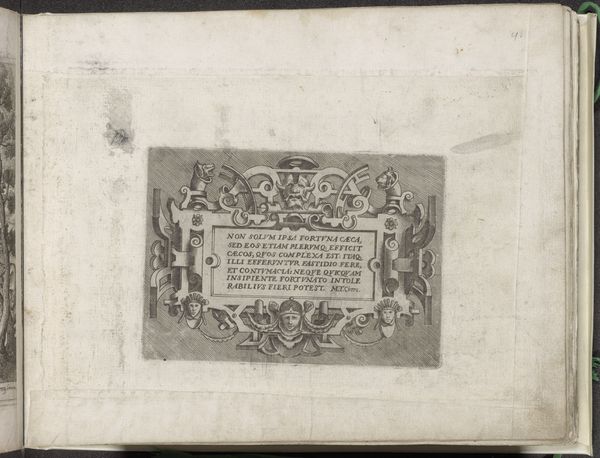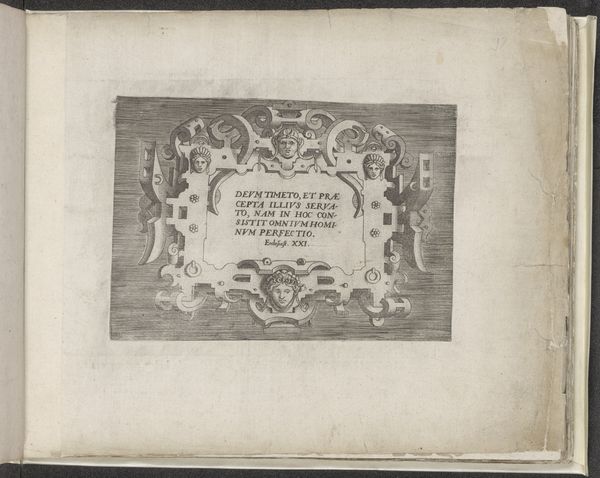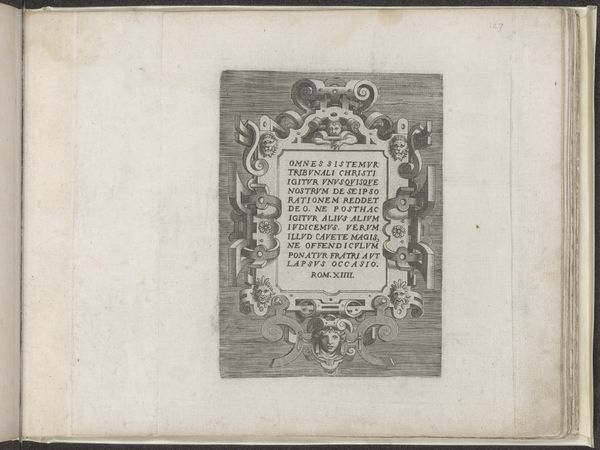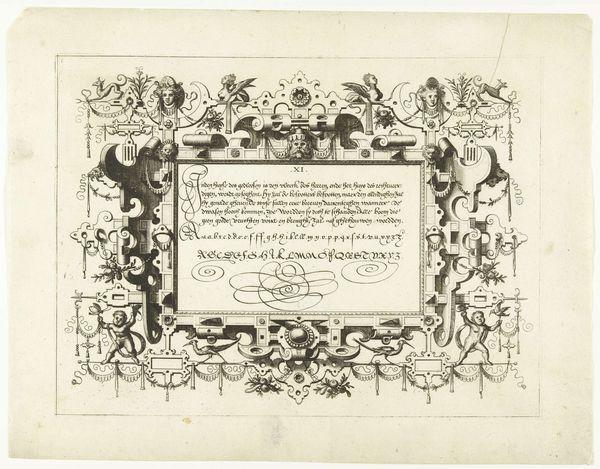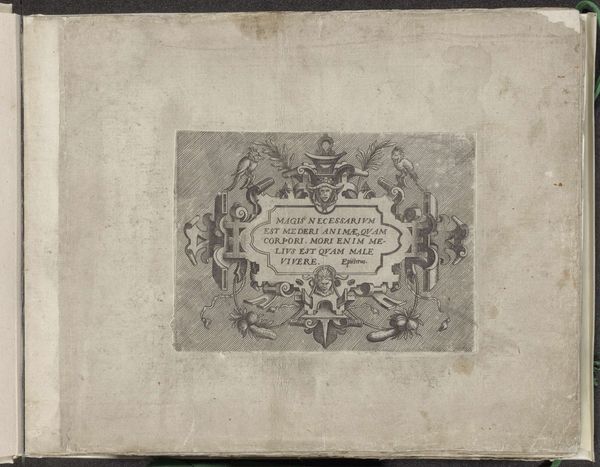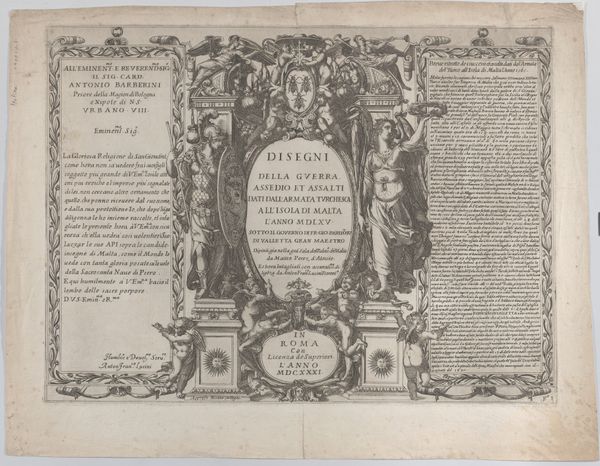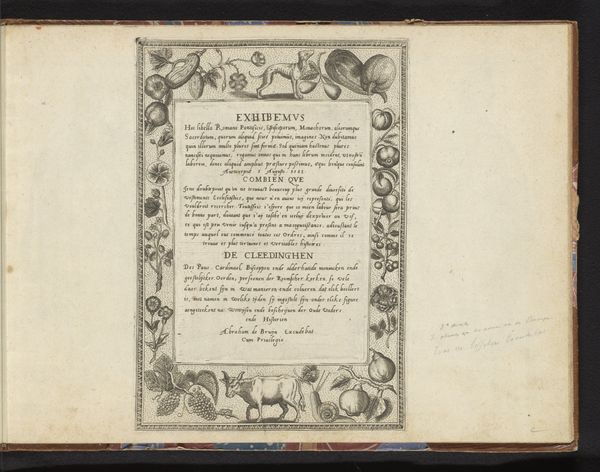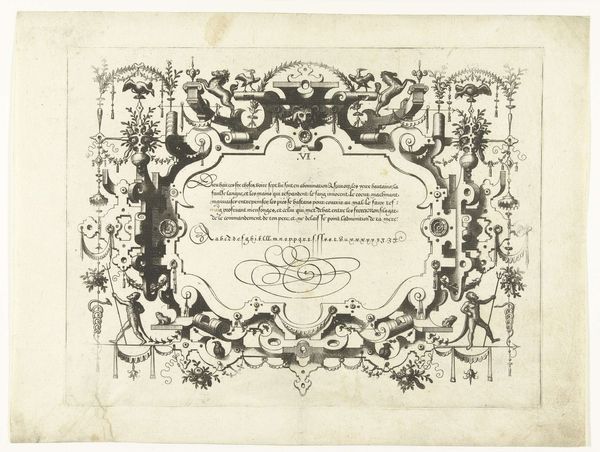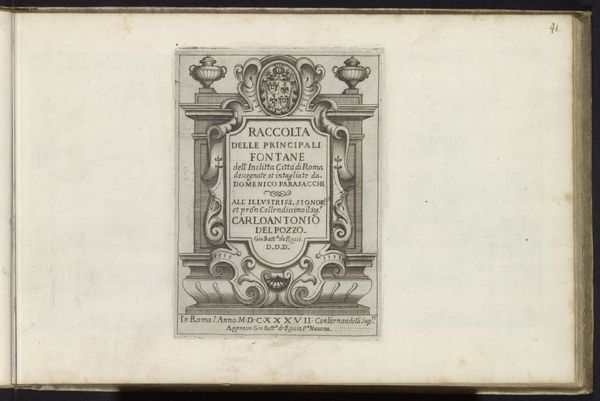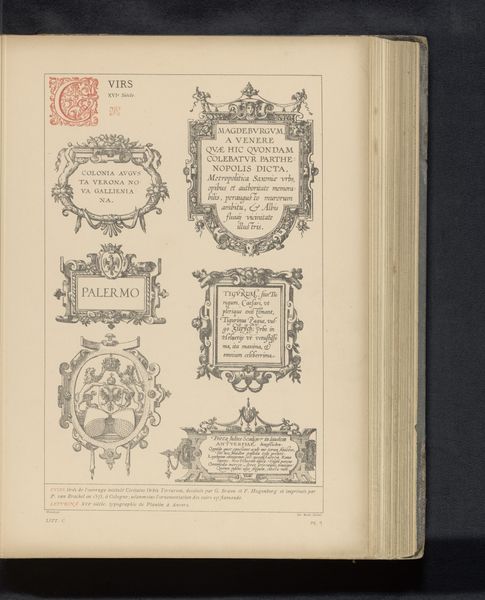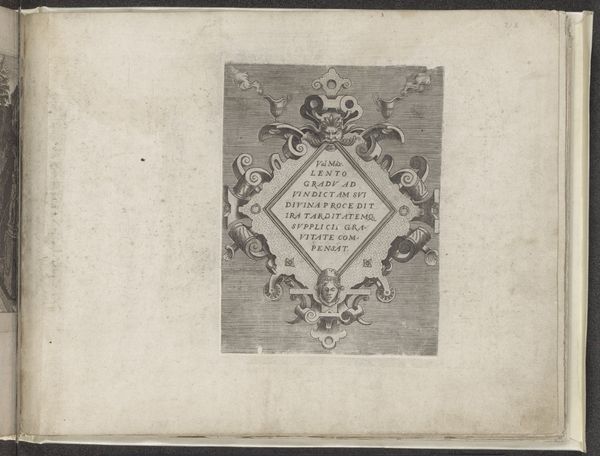
Titel in ornamentele lijst met aan beide zijkanten een vat met een kikker en vogel op de rand c. 1600
0:00
0:00
johannesoflucasvandoetechum
Rijksmuseum
print, paper, typography, engraving
#
ink paper printed
# print
#
paper
#
11_renaissance
#
typography
#
coloured pencil
#
geometric
#
northern-renaissance
#
engraving
Dimensions: height 182 mm, width 250 mm
Copyright: Rijks Museum: Open Domain
Curator: This intriguing print, currently held in the Rijksmuseum's collection, dates back to around 1600. Its full title is "Titel in ornamentele lijst met aan beide zijkanten een vat met een kikker en vogel op de rand," made using engraving techniques, with both ink and colour details added to paper. What strikes you most when you look at it? Editor: The first thing that grabs my attention is the feeling of contained exuberance. It’s ornate, almost overflowing, but framed within very rigid, geometric borders. The image makes me think about how artists navigate constraints. Curator: Precisely! The piece acts as a title page or frontispiece, presenting itself formally but offering an abundance of Renaissance symbolic devices. Consider, for example, the vases flanking the text, each adorned with a frog and bird—ancient symbols linked to transformation and the soul's journey. We find here visual mnemonics connected to ideas and cultural narratives of its time. Editor: And aren't those grotesques cascading down from above those vases? The combination of classical urns and the somewhat bizarre ornamentation makes me wonder about its broader social function. Who was this intended for and how would it be displayed, used, and disseminated? Curator: It served as an advertisement for Hans Vredeman de Vries’s designs, who conceived “various fountains” alongside aerial views and embellishments. As indicated by the printed German at the bottom, this engraving made public these fountains which were 'never printed' before—serving to establish Vredeman de Vries in his era and solidify his role to the modern day. Editor: It’s interesting to consider how these types of printed images played a key role in establishing the careers of individual architects or designers during the early modern period. Printed matter functioned as promotion. The image contains marketing intertwined into the visual design and layout itself. Curator: Indeed! It presents a beautiful intersection of commerce and craft, of immediate visual appeal, of symbols ancient and brand recognition. It's all interwoven. Editor: Looking closer helps to peel away how art operates not just within aesthetic confines, but within institutional structures. Fascinating.
Comments
No comments
Be the first to comment and join the conversation on the ultimate creative platform.
